How to check the capacitor with a multimeter: rules and features of measuring
Capacitors are present in various techniques. They are often the cause of malfunctions. To quickly identify a defective element and replace it, you need to know how to check the capacitor with a multimeter, since this is the easiest way.
We will tell you how to use an inexpensive, but functional device in identifying defective elements. In the article we presented, varieties of capacitors and the procedure for checking them are analyzed. Based on our advice, you can easily find the “weak link” in the electrical circuit.
The content of the article:
What is a capacitor and why is it needed?
The industry produces capacitors of various types used in many industries. They are necessary in automobile and machine building, radio engineering and electronics, in instrument making and manufacturing of household appliances.
Capacitors are a kind of “storehouse” of energy that they give up when short-term power outages occur. In addition, a certain type of these elements filters out useful signals, assigns the frequency of devices that generate signals. The discharge-charging cycle of the capacitor is very fast.
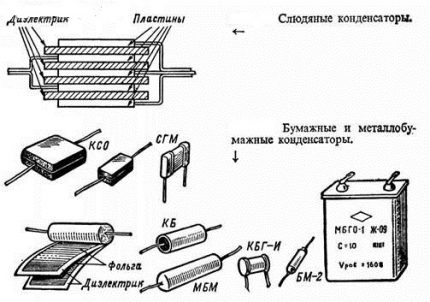
In an alternating current circuit, the capacitor plates are alternately recharged with the frequency of the flowing current. This is explained by the fact that the voltage changes periodically at the terminals of the source of such current. The result of such transformations is alternating current in the circuit.
Like a resistor and a coil, a capacitor shows resistance to an alternating current, but for currents of different frequencies it is different.For example, well passing high-frequency currents, it can simultaneously be almost an insulator for low-frequency currents.
Capacitor resistance is related to its capacitance and current frequency. The larger the last two parameters, the lower its capacitive resistance.
Polar and non-polar varieties
Among the huge number of capacitors, two main types are distinguished: polar (electrolytic), non-polar. As a dielectric, paper, glass, and air are used in these devices.
Features of polar capacitors
The name "polar" speaks for itself - they have polarity and are electrolytic. When you include them in the scheme, its exact observance is necessary - strictly “+” to “+”, and “-” to “-”. If you ignore this rule, the item will not only not work, but may explode. The electrolyte is liquid or solid.
The dielectric here is electrolyte-impregnated paper. The capacitance of the elements ranges from 0.1 to 100 thousand microfarads.
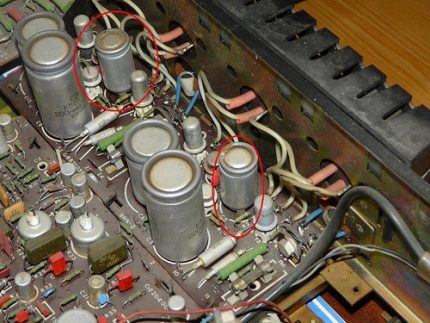
When the plates close, heat is released. Under its influence, the electrolyte evaporates, an explosion occurs.
Modern capacitors on top have a small indentation and a cross. The thickness of the depressed portion is less than the rest of the surface of the lid. In the explosion, its upper part opens like a rose. For this reason, it is possible to observe swelling at the ends of the body of the faulty element.
Differences in non-polar capacitors
Non-polar film elements have a dielectric in the form of glass, ceramics. Compared to electrolytic capacitors, they have a lower self-charge (leakage current). This is explained by the fact that ceramics have a higher resistance than paper.
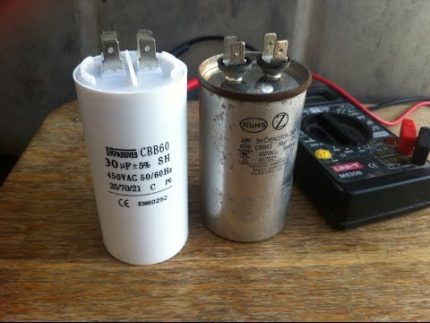
All capacitors are divided into general and special parts, which are:
- High voltage. Use in high-voltage devices. They are produced in various designs. There are ceramic, film, oil, vacuum explosive capacitors. They differ significantly from ordinary parts and access to them is limited.
- Launchers. Applied in electric motors to ensure their reliable operation. They increase the starting torque of the engine, for example, pumping station or compressor at startup.
- Pulsed. Designed to create a strong voltage surge and its transaction to the receiving panel of the device.
- Dosimetric. Designed to operate in circuits where the level of current loads is small. They have a very small self-discharge, high insulation resistance. Most often these are fluoroplastic elements.
- Suppressing. They soften the electromagnetic background in a large frequency plug. They are characterized by insignificant intrinsic inductance, which makes it possible to raise the resonant frequency and expand the band of suppressed frequencies.
In percentage terms, the largest number of part exits from the working order falls on cases when voltage is exceeded than the norm. Design errors can also cause a malfunction.
If the dielectric changes its properties, this also causes a malfunction in the capacitor. This happens when it flows out, dries, and crackes. Capacity changes immediately. It can only be measured with measuring instruments.
The procedure for checking with a multimeter
It is better to check capacitors with removing them from the electrical circuit. So you can provide more accurate indicators.
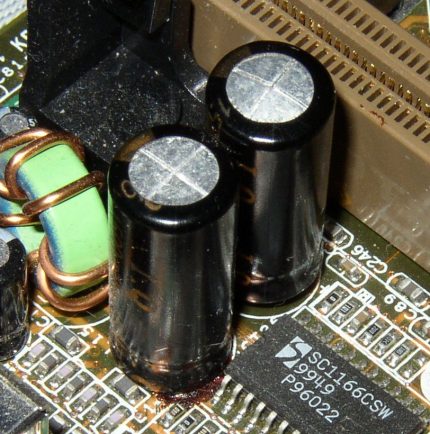
The main property of all capacitors is the passage of current exclusively of an alternating nature. A capacitor passes direct current only at the very beginning for a very short time. Its resistance depends on the capacitance.
How to check the polar capacitor?
When checking the element with a multimeter, the following condition must be met: the capacitance must be greater than 0.25 μF.
The capacitor measurement technology for troubleshooting with a multimeter is as follows:
- Take the capacitor by the legs and short-circuit with some metal object, tweezers, for example, or a screwdriver. This action is necessary in order to discharge the element. The fact that this happened is evidenced by the appearance of a spark.
- Set the multimeter switch to dial or measure resistance.
- Touch probes to the terminals of the capacitor, taking into account the polarity - they bring the red probe to the plus foot, and black to the minus one. In this case, a constant current is generated, therefore, after some time period, the capacitor resistance will become minimal.
While the probes are located on the capacitor inputs, it is charged, and its resistance continues to grow until it reaches a maximum.
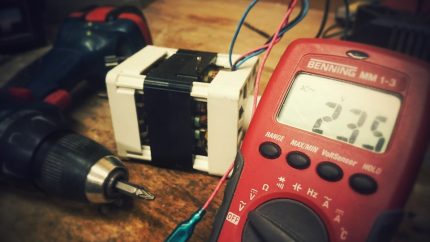
If upon contact with the probes the multimeter starts to squeak and the needle stops at zero, this indicates a short circuit. It became the cause of the malfunction of the capacitor. If immediately the arrow on the dial indicates 1, then an internal break has occurred in the capacitor.
Such capacitors are considered defective and must be replaced. If “1” is displayed only after some time, the part is in good working order.
It is important to take measurements so that abnormal behavior does not affect the quality of the measurements. Do not touch the probes with your hands in the process. The human body has very low resistance, and the corresponding leakage rate exceeds it many times.
Current will follow the path of less resistance, bypassing the capacitor. Therefore, the multimeter will show the result, which has nothing to do with the capacitor. The capacitor can also be discharged using an incandescent lamp. In this case, the process will occur more smoothly.
A moment such as discharging a capacitor is mandatory, especially if the element is high voltage. They do this for security reasons and in order not to disable the multimeter. Residual voltage across the capacitor can damage it.
Non-Polar Capacitor Inspection
Non-polar capacitors are even easier to check with a multimeter. First, the measurement limit is set to megaoms on the device. Next touch probes. If the resistance is less than 2 megohms, then the capacitor is most likely faulty.

When charging an element from a multimeter, it is possible to check its serviceability if the capacitance starts from 0.5 μF. If this parameter is less, the changes on the device are invisible. If it is nevertheless necessary to check an element less than 0.5 μF, then using a multimeter it is possible to do this, but only for a short circuit between the plates.
If it is necessary to examine a non-polar capacitor with a voltage of more than 400 V, this can be done if it is charged from a source protected from short-circuit. circuit breaker. In series with the capacitor, a resistor is connected, designed for a resistance of more than 100 ohms. Such a solution will limit the primary current surge.
There is also a method for determining the performance of a capacitor, such as a spark test. At the same time, it is charged to the working value of the capacity, then the output is short-circuited with a metal screwdriver having an insulated handle. Performance is judged by the strength of the discharge.
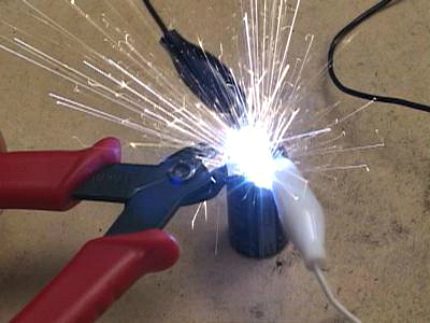
Immediately after charging and after some time, measure the voltage at the legs of the part. It is important that the charge lasts a long time. After you need to discharge the capacitor through the resistor through which it is charged.
Capacitor Capacitance Measurement
Capacitance is one of the key characteristics of a capacitor. It must be measured to ensure that the element accumulates and holds the charge well.
To make sure that the element is operational, it is necessary to measure this parameter and compare it with the one indicated on the case. Before checking any capacitor for operability, it is necessary to take into account some specifics of this procedure.
Trying to measure with probes may not produce the desired results. The only thing that can be done is to determine whether this capacitor is working or not. To do this, select the dialing mode and touch the probes of the legs.
Hearing a squeak, swap the probes, the sound should repeat. You can hear it with a capacitance of 0.1 μF. The larger this value, the longer the sound.
If you need accurate results, the best way out in this situation is to use a model that has special pads and the ability to adjust the plug to determine the capacity of the element.
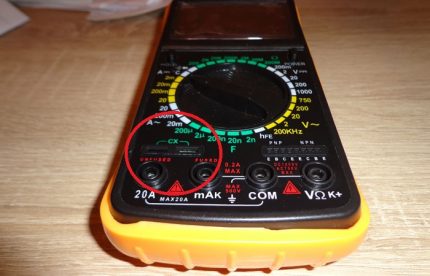
The device is switched to the nominal value indicated on the capacitor housing. Insert the latter into the landing "nests", after discharging it with a metal object.
The screen should display a value of capacity equal to approximately nominal. When this does not happen, they conclude that the item is damaged. Make sure that there is a new battery in the device. This will provide more accurate readings.
Multimeter voltage measurement
You can learn about the performance of the capacitor by measuring the voltage and comparing the result with the nominal value. To check, you need a power source. The voltage should be slightly less than that of the element being tested.
So, if the capacitor is 25 V, then a 9-volt source is enough. The probes are connected to the legs, taking into account the polarity, and wait a while - literally a few seconds.

It happens that the time is up, and the expired item is still operational, although it has different characteristics. In this case, it must be constantly monitored.
The multimeter is set to voltage measurement mode and perform a test. If almost immediately an identical value appears on the display, the element is suitable for further use. Otherwise, the capacitor will have to be replaced.
Check capacitors without evaporating
Capacitors can not be removed from the board for verification. The only condition is that the board must be de-energized. After de-energizing, wait a while until the capacitors are discharged.
It should be understood that to get a 100% result without evaporating an element from the board does not work. Nearby parts interfere with full validation. You can only verify that there is no breakdown.
In order to check the condition of the capacitor without soldering it, they simply touch the terminals of the capacitor with probes to measure the resistance.Based on the type of capacitor, the measurement of this parameter will also differ.
Capacitor Testing Recommendations
Condenser parts have one unpleasant property - when soldering after exposure to heat, they are very rarely restored. At the same time, you can qualitatively check an element only by dropping it from the circuit. Otherwise, elements nearby will shunt it. For this reason, some nuances should be taken into account.
After the tested capacitor is soldered into the circuit, the repaired device must be put into operation. This will provide an opportunity to follow his work. If its performance is restored or it began to function better, the checked item is changed to a new one.
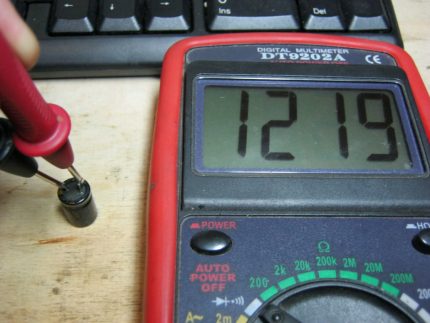
To shorten the test, not two, but only one of the terminals of the capacitor is soldered. You need to know that for most electrolytic cells this option is not suitable, which is associated with the structural features of the housing.
If the circuit is complex and includes a large number of capacitors, the fault is determined by measuring the voltage on them. If the parameter does not meet the requirements, the suspicious item must be removed and checked.
If faults are detected in the circuit, check the capacitor release date. The drying out of the element over 5 years of operation is on average about 65%. Such a part, even if it is in working condition, is best replaced. Otherwise, it will distort the operation of the circuit.
For next-generation multimeters, the maximum measurement is capacitance up to 200 uF. If this value is exceeded, the control device may fail, although it is equipped with a fuse. The latest generation equipment contains smd electrocapacitors. They are very small in size.
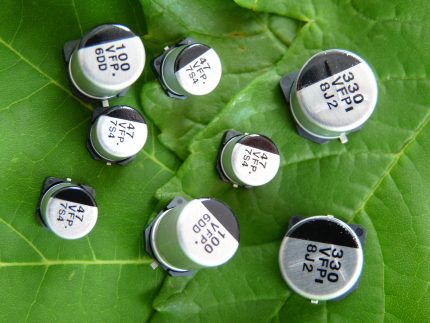
It is very difficult to solder one of the conclusions of such an element. Here it is better to raise one terminal after desoldering, isolating it from the rest of the circuit, or disconnect both terminals.
Learn how to check the voltage in the socket with a multimeter. next article, which we highly recommend reading.
Conclusions and useful video on the topic
Video # 1. Details on checking the capacitor with a multimeter:
Video # 2. Revision of the capacitor on the board:
It makes no sense to purchase sophisticated equipment for the diagnosis of capacitors. It is quite possible to use a multimeter for this purpose with an appropriate measuring range. The main thing is to be able to correctly apply all its capabilities.
Although this is not a highly specialized device and its limits are limited, it is enough for inspection and repair of a large number of popular electronic devices.
Please write comments in the block below, post photos and ask questions about the topic of the article. Tell us about how capacitors were tested for operability. Share useful information that is useful to site visitors.

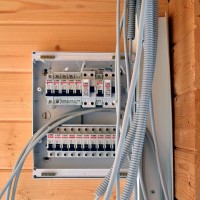 Wiring in the apartment: an overview of the main schemes and the procedure for performing work
Wiring in the apartment: an overview of the main schemes and the procedure for performing work 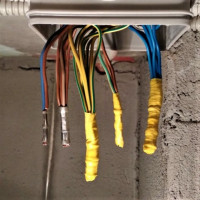 How to connect wires without soldering: the best ways and their features + installation recommendations
How to connect wires without soldering: the best ways and their features + installation recommendations  Do-it-yourself wiring in the kitchen: wiring diagrams + features of the electrical work
Do-it-yourself wiring in the kitchen: wiring diagrams + features of the electrical work 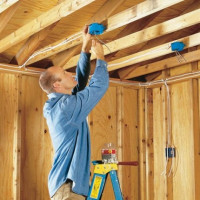 Wiring in a wooden house: design rules + step-by-step installation
Wiring in a wooden house: design rules + step-by-step installation 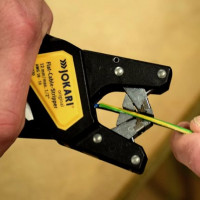 Stripper for stripping wires: rules for selecting a tool for stripping cable and wires
Stripper for stripping wires: rules for selecting a tool for stripping cable and wires 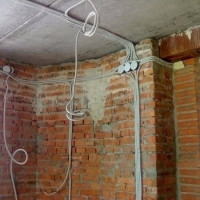 How to conduct wiring in the apartment with your own hands from the shield: basic schemes and rules + installation steps
How to conduct wiring in the apartment with your own hands from the shield: basic schemes and rules + installation steps  How much does it cost to connect gas to a private house: the price of organizing gas supply
How much does it cost to connect gas to a private house: the price of organizing gas supply  The best washing machines with dryer: model rating and customer tips
The best washing machines with dryer: model rating and customer tips  What is the color temperature of light and the nuances of choosing the temperature of the lamps to suit your needs
What is the color temperature of light and the nuances of choosing the temperature of the lamps to suit your needs  Replacement of a geyser in an apartment: replacement paperwork + basic norms and requirements
Replacement of a geyser in an apartment: replacement paperwork + basic norms and requirements
Unfortunately, the multimeter allows you to find only capacitors that have already lost the lion's share of their capacity, and does not see some malfunctions at all. Those who are constantly engaged in the “sorting out” of electrolytic capacitors should pay attention to a more efficient device - an ESR probe (in the Russian-language version of EPS, equivalent series resistance).
There are various schemes for assembly, even on a pair of KT315 transistors, but I see no reason to discuss them. Ready-made Chinese kits are now available, which will also be collected by a novice radio amateur. The probe makes it easy to find dead capacitors, even without visual signs of a malfunction. By the way, there are probes that allow you to determine the suitability of a capacitor without evaporating it from the board.